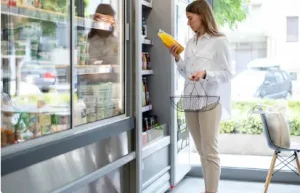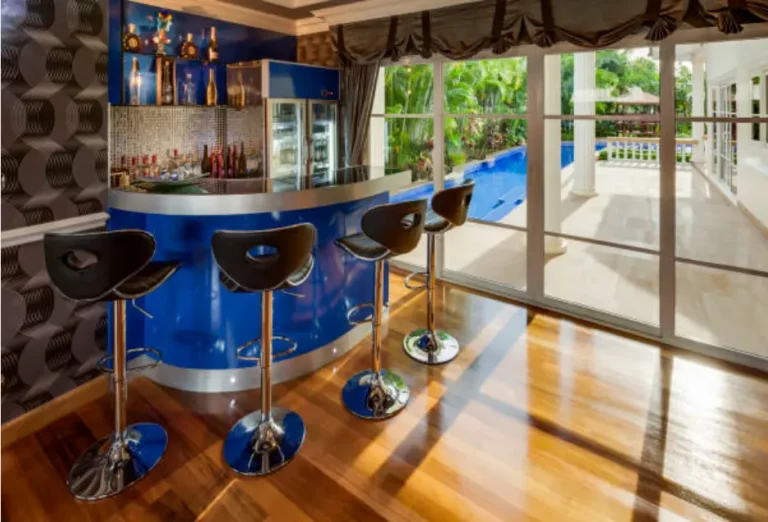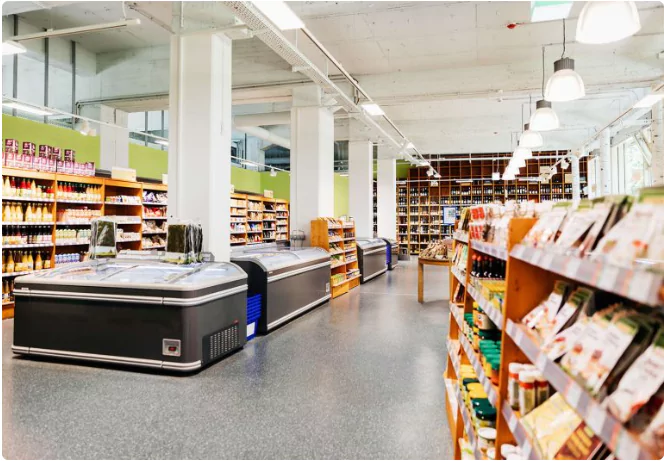Commercial fridges are essential in the food and retail sectors, for keeping products fresh and safe while running silently in the background. What happens if the power suddenly goes out? How do these vital appliances sustain their temperatures, and what strategies can companies adopt to lessen damages and ensure food safety during such disruptions? This piece will delve into the factors that impact a refrigerator’s capability to remain cold without electricity and offer useful advice on managing these scenarios effectively.
Understanding Commercial Refrigeration
Commercial fridges made for business are built tough to handle use and store lots of perishable items all day and night without a break! Their strong build quality and good insulation help them keep a temperature to keep food safe and avoid spoilage risks. But they need a steady power source to work well; otherwise, power cuts can mess up the stored products and cost businesses money.
Factors Affecting Temperature Retention
The duration a commercial fridge can maintain a safe temperature without power hinges on several factors:
Type and Size of the Refrigerator:
- Reach-in refrigerators are smaller units typically found in restaurants and convenience stores.
- Walk-in refrigerators are larger, enclosed spaces commonly used in supermarkets and food processing facilities.
- Glass door merchandisers are designed for display and sales, showcasing products while maintaining a cool temperature.
Ambient Temperature:
A higher ambient temperature, especially in a warm kitchen, will accelerate the warming process inside the refrigerator.
Refrigerator Contents:
- A full refrigerator retains cold air better due to the thermal mass of the stored items, acting as ice packs to slow down the warming process.
- Grouping food items in a partially full freezer can help maintain lower temperatures.
Door Seals and Insulation:
Ensuring that your door seals are in condition and properly insulated. This is crucial to keeping cold air inside and preventing warm air from leaking in.
How Long Will a Commercial Fridge Stay Cold?
While specific durations vary, here are general guidelines:
Refrigerators: A commercial refrigerator can typically maintain safe temperatures for 4 to 6 hours without power.
Freezers: A fully stocked commercial freezer can hold its temperature for up to 48 hours, provided the door remains closed.
What to Do When the Power Goes Out
Refrigerators:
- Keep the door closed: Every time the door opens, cold air escapes, reducing the time the refrigerator stays cold.
- Use insulated containers: Make sure to put any food items, in insulated containers or transfer them to a working fridge or cooler if possible.
Freezers:
- Minimize door openings: Resist the temptation to check the freezer’s contents frequently.
- Group food together: If the freezer isn’t full, organize the items into tight groups to help them stay cold longer.
- Use dry ice: If an extended outage is expected, dry ice can help maintain freezing temperatures. (Please note that this information is from outside of the provided sources).
Restoring Power: What to Do
Refrigerators:
- Check temperatures: Check the temperature inside your refrigerator with a thermometer. If it’s above 40°F (or 4˚C) make sure to throw away any perishable items stored in there. (Please note that this information is from outside of the provided sources).
Freezers:
- Refreeze if possible: You can typically refreeze foods that still have ice crystals or are at or, below 40°F (4°С).
- Discard unsafe foods: Thawed meats, poultry, and seafood that have been above 40°F (4°C) for more than two hours should be discarded. (Please note that this information is from outside of the provided sources).
Proactive Measures to Minimize Losses
Regular Equipment Maintenance:
- Inspect door seals: Make sure you seal the doors tightly to keep out the air.
- Schedule professional maintenance: Make sure to get your refrigerators checked by professionals on a regular basis.
Proper Food Storage:
- Follow label instructions: Adhere to storage recommendations on food labels to prevent spoilage.
- First In, First Out (FIFO): Rotate stock regularly to ensure older items are used first.
Backup Power Solutions:
- Consider a generator: Investing in a backup generator can provide power to essential equipment during outages.
Emergency Plan:
- Develop a written plan: Outline procedures for handling power outages, including emergency contact information, equipment handling protocols, and food safety guidelines.
Create Refrigeration: A Partner in Cold Chain Solutions
A Reliable Brand: Create Refrigeration
In the world of the commercial refrigeration industry Create Refrigeration is a trusted and forward-thinking brand committed to delivering notch and energy-saving solutions, for different businesses. With a commitment to customer satisfaction, Create offers a wide range of products, including:
- Multidecks Open Chillers: Ideal for displaying fresh produce, dairy products, and beverages in supermarkets.
- Glass Door Freezer & Cooler: Great for displaying a range of items while keeping the temperatures consistent.
- Island Freezers: Ideal for showcasing foods with a focus, on visibility including ice cream and other frozen items.
- Deli Meat Showcases: Essential for displaying and preserving fresh meats, cheeses, and deli products.
Customized Solutions: OEM Services
Create Refrigeration also provides OEM (Original Equipment Manufacturer) services, offering customized solutions to meet specific business needs. With OEM services, businesses can:
- Private Label Products: Manufacture products under their brand name.
- Tailored Designs: Customize the design, features, and branding of their refrigerators.
- Cost Savings: Benefit from competitive pricing and efficient manufacturing processes.
Learn More about Create Refrigeration’s OEM services.
Conclusion
Commercial refrigerators are essential in the food industry for businesses. They face challenges during power outages as they rely heavily on electricity supply emphasizing the need to understand temperature control factors and implement measures to minimize risks and protect food quality, in such circumstances. To address this challenge effectively and maintain a cold chain operation during disruptions, businesses should collaborate with established brands, like Create Refrigeration, and leverage their tailored OEM services to acquire top-notch solutions aligned with their specific requirements.





















